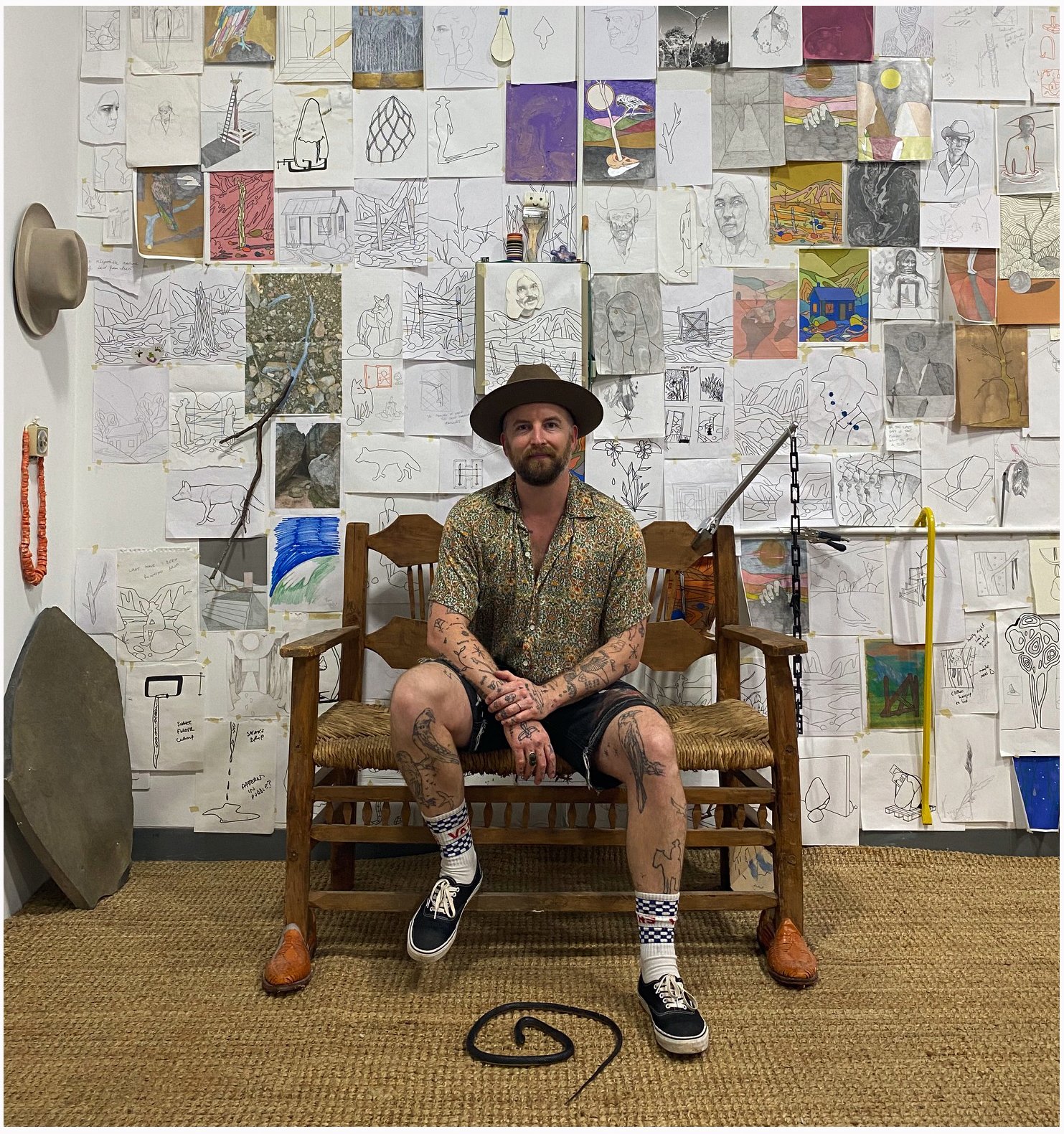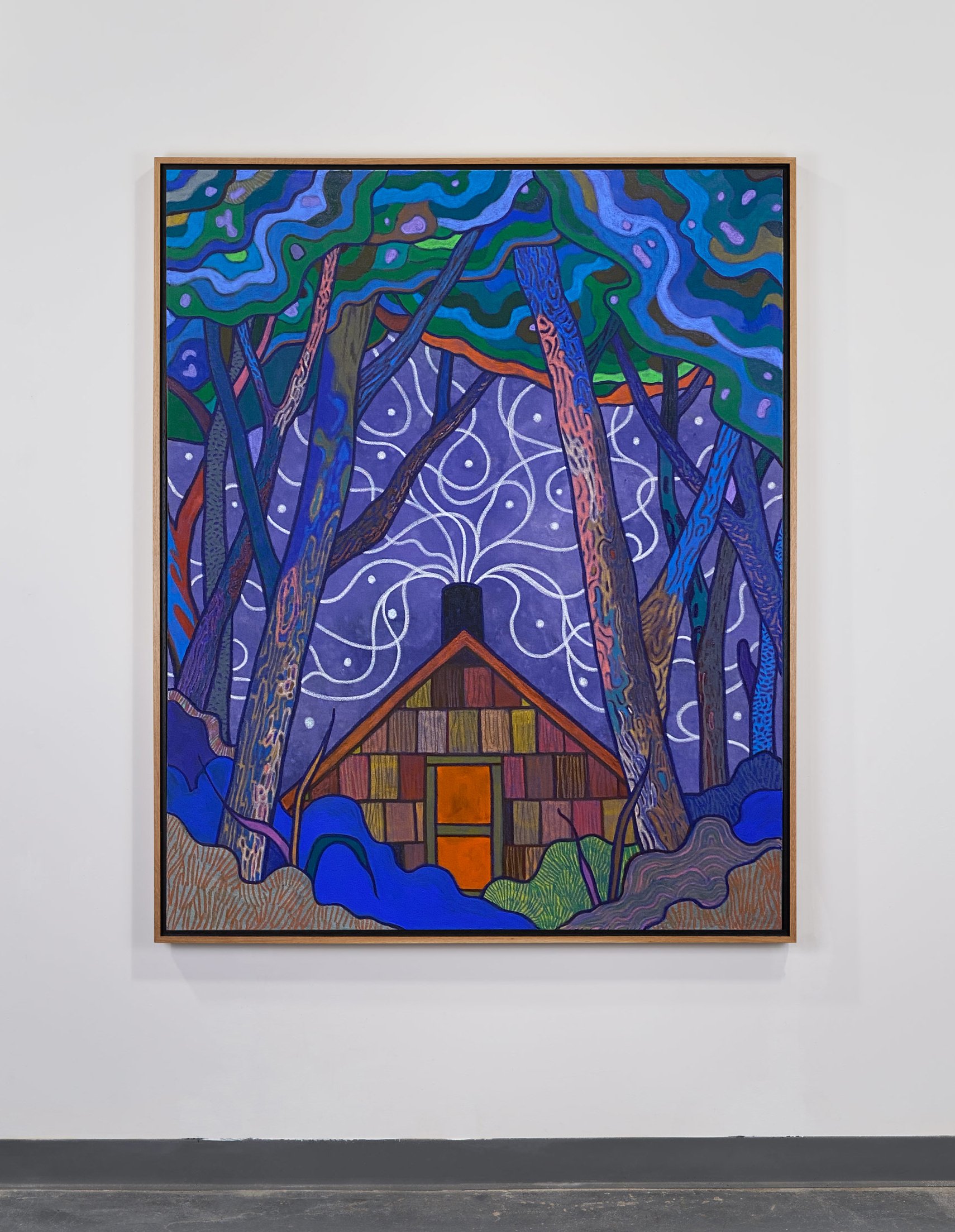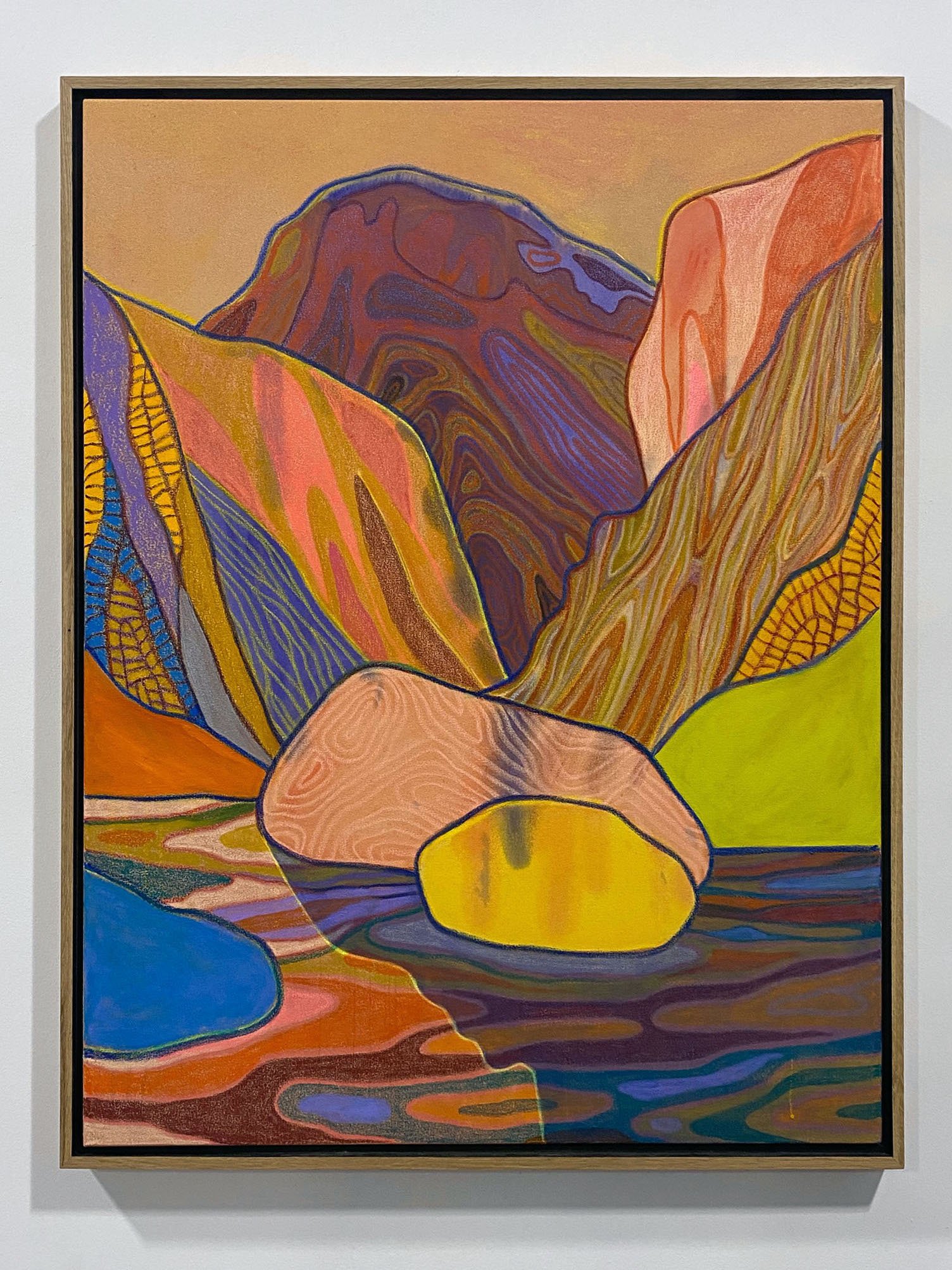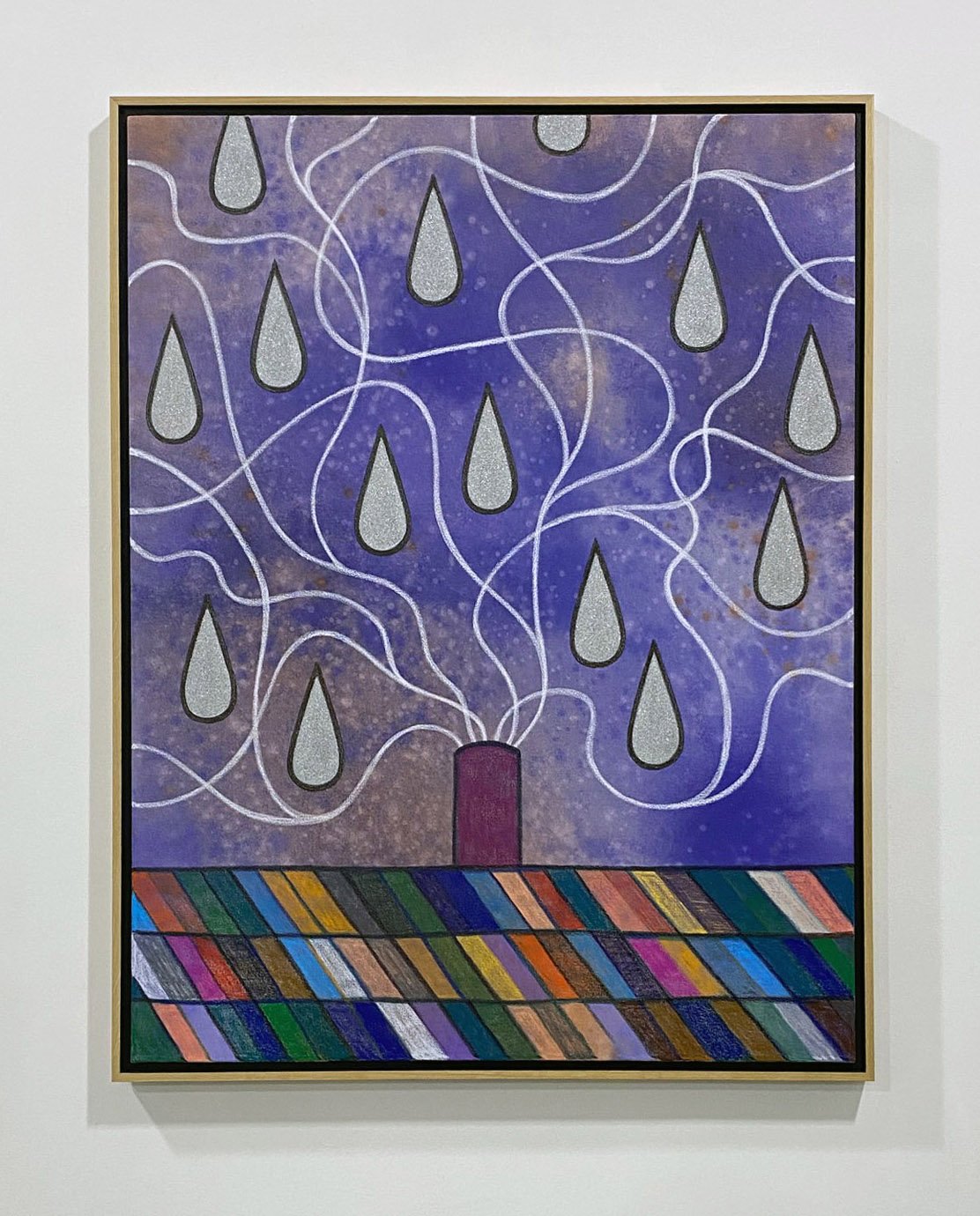Tom Jean Webb
Tom Jean Webb has been depicting a land found in dreams and romantic imagined adventures since childhood. Using that art to take himself to the American Southwest to discover, explore and connect to his new reality. Born in London in 1982, growing up drawing as a transformative experience would go on to become his passion and career. He studied at Kingston University 2004-07 earning a first degree. Since graduating he has exhibited in many spots in Europe such as London, Paris, Berlin as well as Hong Kong and multiple cities in the USA. Tom is now represented by galleries in Texas, Germany and France and is currently continuing his art practice creating paintings and sculptures, using found natural and manufactured objects. Telling stories of his adventure and relationship with the new spaces and objects that fill his journey.
“In many ways I genuinely feel like I’m on that same journey I started as a child, that this is all the same path from the same story,”
My work started off as a means of transportation. To depict a place created and imagined with a sense of romance and nostalgia. I became interested in the idea of starting a dialogue between the imagined and real, to see what this new reality and I could create. To do so I started to take trips to the lands of my work, specifically the American Southwest. It has created an interesting dynamic between the leading and learning forces of being, art leading life or life leading art. Making work inspired by the realness in what I find but also allowing space for the added artistic creation or surreal. I use story telling in my work, I love the idea of a visual language and how this can portray a narrative. I see my individual works as frames of one long continual film. When these frames are laid out together patterns emerge. Objects, colors and shapes all start to inform each other. To develop an idea of art as communication, to allow conversation with the viewer There’s an ordered dreaminess to my paintings. The solitary figures, lonely landscapes, and palette lend a certain romance, a definitive line which surround everything in the images, from stones to mesas to snakes, make the individual elements in the paintings look like pieces in a puzzle. Theres a developed idea of investigating the use of space, specifically how to create room for an unknown or unforeseen in an artwork. To create work that allows someone to find room to breathe, to participate and discover. I want to offer a window or moment into space, a space that can speak through the process of absence, a voice through silence. That in a song it’s the silent moments that offers the sound. I create work to try understand my role as an artist and my relationship to my artistic practice, how it affects my response to the natural world and what it means to offer my subjective response to it. A practice in being present, seeing, exploring, decorating and communicating.
Playing with making work that speaks of the real, the surreal, fantasy and the found.
Please tell us more about your background and how you began creating art?
I grew up in a creative family, not all making art necessarily but all engaged in passion projects, expressing themselves through their interests. I connected with drawing and painting from an early age, connecting with the idea of understanding the things I liked or things I felt by drawing them. Eventually I understood there was a place for what I was doing and took myself back into education to study a fine art degree at Kingston University. I have been on that journey of learning and discovery ever since. Using my art as means to travel and move, creating journeys to inspire and document in my own way.
What does your art aim to say to the viewers?
I want the audience to connect to the work and feel themselves a part of it. I see the paintings as windows into a place, space or journey that they can place themselves in. I'm fascinated by the idea that I can feel something, create an artwork inspired by that feeling and then have that feeling possibly adopted by the viewer. It’s a very real form of communication but more visceral than the spoken word. The space for everyone to exist is essential, I'm not looking to dictate anything. My art allows for thought, movement and a different reaction every time.
Do you have an essential philosophy that guides you in your creative expression?
For me it’s a sense of fun. I actively try to evolve my sense of fun and play in the process of creating. To adopt some childlike instincts when working. But to be able to counter that with a deeper understanding of
the work once it’s made, learning to analyze what is happening and why it’s happening. It can often feel like a conversation between the two and I hope it makes for honest work. Another philosophy is to try and be a
real part of the work, not in a literal self portrait way but to actively engage in the work on all levels. Engaging in the work by being a part of the spaces you create or get inspiration from, for example I recently did a short geology course to understand more about rocks and rock formations. They are becoming a symbol and a tool to display certain concepts in my work so I wanted to learn more about them.
What art marketing activity do you put into practice regularly that works most successfully for you?
The biggest part for me in regards to marketing is making sure I document my work properly. We make work to be seen and hope as many eyes as possible get to see and experience the work in real life but unfortunately not everyone will so good documentation is essential. To at least be able to give a sense of the work and hope the viewer can have some reaction to the work even if they can’t see it live.
Can you tell us about the process of creating your work? What is your daily routine when working?
I tend to try and be as regular as possible with my practice, by having consistent and dedicated hours everyday. It’s my favorite thing to do so I have to be reminded to engage in other activities. The thing I find with art is that my mind is never switched off from thinking about it. So it’s about learning how to healthily create a level of structure and room for myself, so that my day can be productive. For me all work starts with pencil and paper, sketching and playing with ideas. The sketches are pinned to my ‘mind wall’ where I can see what’s happening with my ideas, where they’re heading and what they are trying to say. Eventually I’ll keep playing with a particular idea or will see several ideas merging into one and think about how I can evolve them. A big part of my practice going forward is to allow a middle stage that I do not know about, too leave space in the process for instinctive creation. So I have a starting point in order to create a journey of discovery in the process of making. Which then in turn inspires then next starting point, allowing for an expanding circular form of creation.
How much planning goes into each artwork?
The balance between planning and spontaneity is one I’m interested in understanding. I found my work was feeling too planned from start, middle to end. So I spend a lot of time thinking about preparing and documenting ideas, but also creating space once something has started. Basically creating a framework for movement, an idea that allows for creative response. I go on regular hikes, taking pictures of things or moments that inspire me. Trying to understand the elements that make up my work. I love making sculptures in my studio using found rocks and objects from my hikes, they might not end up as finished pieces but they allow me to understand more about what I want to achieve in my paintings.
What’s the essential element in your art?
As previously mentioned, a sense of fun and play is essential. It inspires me to create more and allows for a vulnerability to make my best or most honest work. I felt several years ago I had lost that idea of fun and had a real conversation with myself about how to regain it. I decided to strip everything away about what I previously thought I wanted to makeor maybe what my ego wanted to make. I started a journey of relearning. I began with the simplicity of a line, what I wanted to do with a line, what could I say with a line. Slowly adding other formal qualities like color. Im still on that same journey, trying to understand my relationships with the elements of my art. Also understanding where I am and what relationship that has on my art. I grew up just outside London, drawing big expansive romantic landscapes of the American South West. I followed those drawings and now live in Texas. I realized I had stepped into my work and now the perspective was different. So now I feel myself more present day to day, what does that mean to make work from within the work.
In your opinion, what role does the artist have in society?
I think art is an important form of communication. It creates room for free thinking that doesn’t exist in many other places, allowing space for honest human reaction. Much like a sound can instigate instinctive emotive response I believe so too can fine art. It helps us understand where we are and what we are as humans, a consistent record of society, time and emotions. I hope as an artist to try to connect to others and allow for conversation. There are many different forms of art and ways of creating, but for me I like to see it as an honest reaction to living, a mirror on the way we act and feel, in doing so we can hope to learn something.
Are there any projects you are currently working on and able to speak about?
I’m very excited about a new sculpture series. This new series started with an interest in the idea of space that exists in my paintings. How lines on a canvas tell a story, how those lines ask a viewer to believe in this implied space. With my paintings I use the rich history of landscape painting to play with these ideas of space. Creating landscapes inspired by real journeys but with my own added sense of surreal, romance and imagined, These sculptures are an exercise in taking this new version I have created and sending it back into the ‘real’ landscape, a continuation of the dialogue I am having with the landscape through my art practice. Creating a physical painting, framed by the viewers eyes. A work where the space around the sculpture is as important as the object itself, one is to look through, not just at and ultimately take in the beauty that surrounds the sculptures. The final versions are to be made out of steel and colored acrylic, standing 10 feet tall. I currently have 3 in production for sites in Texas and California.








